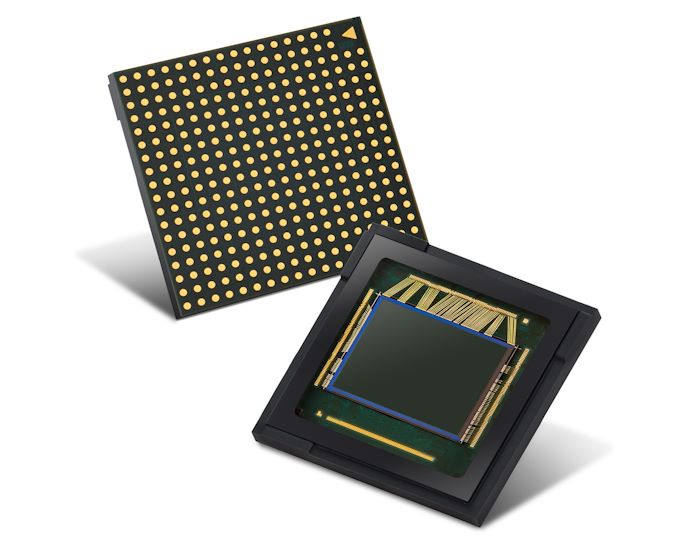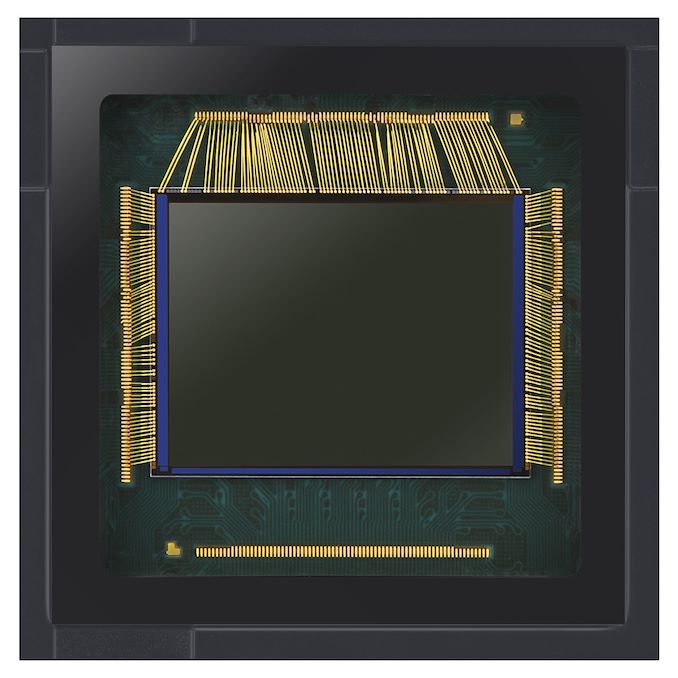Samsung Announces New 50MP Dual-Pixel and Quad-Bayer ISOCELL Sensor
by Andrei Frumusanu on May 19, 2020 6:30 AM EST- Posted in
- Mobile
- Smartphones
- Sensor
- Samsung LSI
- Camera Sensors
- Samsung GN1

Samsung today has announced a brand-new flagship sensor in the form of the ISOCELL GN1. The new sensor is seemingly a follow-up to the 108MP ISOCELL HMX and HM1 sensors that we’ve seen employed by Xiaomi devices and the Galaxy S20 Ultra.
The big changes in the new GN1 is that it uses are different optical formula to the existing larger megapixel sensors. It’s only a bit less than half the resolution at a maximum of 50 megapixels, however the per-pixel pitch grows from 0.8µm to 1.2µm.
It seems that Samsung’s main rationale to grow to a larger pixel pitch wasn’t just the per-pixel increased light gathering ability, but rather the enablement to re-introduce full sensor dual-pixel phase-detection. The existing 108MP sensors that have been out in the market have been using 2x1 distributed on-chip lens phase detection autofocus pixels on the sensor, with the autofocus performance not been nearly as performant and a dual-pixel PD solution. In theory, the GN1 using dual-pixel PD pixels means that it uses pairs of 0.6µm x 1.2µm photo sites.
The GN1 is also the first sensor to pair the dual-pixel technology with a quad-bayer colour filter array, which Samsung calls Tetracell. In effect, the 50MP sensor will natively bin 2x2 pixels to produce a 12.5MP image with effective pixel pitches of 2.4µm. Interestingly, Samsung also talks about providing software algorithms to be able to produce 100MP images by using information from each individual photodiode – which all sounds like pixel-shift super resolution techniques.
The size of the sensor remains at a large 1/1.33” – in essence it’s most comparable to Huawei’s current 50MP sensor that is found in the P40 series phones – with the addition of Dual Pixel PD.
The sensor still supports 8K30 video recording, but we hope it’s able to achieve this with a smaller image crop compared to the current HM1 implementation in the S20 Ultra.
These new generation sensors are extremely challenging for vendors to properly use – besides the increased computational workload to actually use the full resolutions (the reduction from 108MP to 50MP will help there), there’s also the challenge of providing adequate optics that can take advantage of the resolution. It seems the GN1 here is a bit more reasonable in its demands, other than its sheer large size.
Related Reading:
Source: Samsung Newsroom











68 Comments
View All Comments
s.yu - Thursday, May 21, 2020 - link
Luminance doesn't translate well with bayer (much less quad bayer) because there's still interpolation involved, which is why Leica M Monochrome does indeed take notably sharper photos with the same sensor as regular M, just that they're limited to BW, and another downside is that you can no longer manipulate individual color channels doing post processing in BW.Psyside - Monday, June 8, 2020 - link
So will you admit that you were wrong or you will not have the decenty do to so? i was wating for you to send me your email, but you didn't so i will be generous in order to avoid embarrassing you (completely) and i will use OLD inferior photos,Mouse over to compare, identical crops,
https://screenshotcomparison.com/comparison/3285
Santoval - Tuesday, May 19, 2020 - link
The MP ceiling for phones lies at the same level as the marketing ceiling.verattemples - Wednesday, June 3, 2020 - link
I was without work for 6 months when my former Co-worker finally recommended me to start freelancing from home… It was only after I earned $5000 in my first month when I actually believed I could do this for a living! Now I am happier than ever… WWW.iⅭash68.ⅭOⅯFunBunny2 - Tuesday, May 19, 2020 - link
I don't care a fig about the camera on my phone. Only used one a few times in all the years I've had a smartphone, but I've used both Nikon SLRs and Leica rangefinders and the lens construction between those two designs (nothing to do with brand names, btw, just physics) raises a question. With the SLR, short focal distance lenses require a retro-focus, basically the lens mount has to be farther from the focal plane, due to leaving space for the mirror swing. Retro-focus fools the lens into thinking the focal plane isn't way off in the distance. If memory serves, even 'normal' 50mm lenses are retro-focus.Retro-focus lens have to do their voodoo by inserting multiple elements into the lens, in essence, focus the main element inside the lens, then push the focused image past the mount out to the film.
With smartphone cameras, I'd expect the opposite to occur: the lens is way too close to the sensor, putting the focal plane behind your left ear, and thus requiring moving the physical focal plane back toward the lens to find the sensor. Each added element eats up light, and thus degrades the image. At some point physics/optics says, 'No mas!!'.
PeachNCream - Tuesday, May 19, 2020 - link
Phone cameras are very useful for casual photography, capturing images or video as events happen, and photographing during emergencies. Few of us routinely carry an a dedicated camera with us on a routine basis unless our occupation makes it a requirement. I do not think its really going out on much of a limb to say that a large majority of people do not bother with purchasing a dedicated camera and rely exclusively on whatever capabilities happen to be in the phone they own.Dizoja86 - Wednesday, May 20, 2020 - link
I know few people with dedicated point-and-shoot or SLR cameras at this point. The processing that smartphones to compensate for their tiny sensors and weak optics leaves images that point-and-shoot cameras from a decade ago couldn't dream of. I'm more than happy with the cameras on my Galaxy s10, and most people have been impressed by the images I've taken.Of course I wouldn't consider smartphones for professional photography, but even flagship smartphones from 2015 would leave most people happy with the images they were capturing.
watzupken - Wednesday, May 20, 2020 - link
"I know few people with dedicated point-and-shoot or SLR cameras at this point. The processing that smartphones to compensate for their tiny sensors and weak optics leaves images that point-and-shoot cameras from a decade ago couldn't dream of. I'm more than happy with the cameras on my Galaxy s10, and most people have been impressed by the images I've taken."There are not that many people that have a passion for photography, and you can kind of validate this from the people that you know. So I don't disagree that most people will find photos taken from older flagship good enough. For me, I still keep a bridge camera after I sold off my DSLR which I find too bulky after sometime. The bridge camera is a good companion when I travel as the image quality is still superior and offers the ability to have a good optical zoom. While mobile phones have somewhat caught up in terms of zooming capabilities, but the quality is nowhere as good from my opinion due to the small sensor size for the zoom lens.
s.yu - Thursday, May 21, 2020 - link
You're not really making sense, mirrorless lenses can also be retrofocus, like Sony's ZE 35/1.4, and Zeiss's ZM 35/1.4. The current trend is better correction at the expense of more elements, which generally means significantly increased size and weight, and retrofocal designs seem to allow correction in that manner.Regarding smartphone lenses, they generally use a couple radical aspherics, but I don't think they fall into any single category as a whole, for example the 3x telephotos are probably really telephotos, in the original sense that the physical length is shorter than the FL.
GC2:CS - Tuesday, May 19, 2020 - link
How does the dual pixel work ? There are two photodiodes for phase detection under each pixel. So why doesn’t it make the sensor twice the resolution ? If there are two diodes they are insulated. Does that mean effective area that gathers light is less than without dual pixels ?What about octa pixel huawei uses ? What is the difference a 50ML dual pixel and 100 MP regular pixel ?